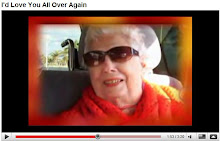Lost Chances for Survival, Before and After Stroke
By GINA KOLATA , New York Times
Dr. Diana Fite, a 53-year-old emergency medicine specialist in Houston, knew her blood pressure readings had been dangerously high for five years. But she convinced herself that those measurements, about 200 over 120, did not reflect her actual blood pressure. Anyway, she was too young to take medication. She would worry about her blood pressure when she got older.
“I called 911, but nothing would come out of my mouth,” she said. Then she found that if she spoke very slowly, she could get out words. So, she recalled, “I said ‘stroke’ in this long, horrible voice.”
Dr. Fite is one of an estimated 700,000 Americans who had a stroke last year, but one of the very few who ended up at a hospital with the equipment and expertise to accurately diagnose and treat it.
Stroke is the third-leading cause of death in this country, behind heart disease and cancer, killing 150,000 Americans a year, leaving many more permanently disabled, and costing the nation $62.7 billion in direct and indirect costs, according to the American Stroke Association.
But from diagnosis to treatment to rehabilitation to preventing it altogether, a stroke is a litany of missed opportunities.
Although tPA was shown in 1996 to save lives and prevent brain damage, and although the drug could help half of all stroke patients, only 3 percent to 4 percent receive it. Most patients, denying or failing to appreciate their symptoms, wait too long to seek help — tPA must be given within three hours. And even when patients call 911 promptly, most hospitals, often uncertain about stroke diagnoses, do not provide the drug.
“I label this a national tragedy or a national embarrassment,” said Dr. Mark J. Alberts, a neurology professor at the Feinberg School of Medicine at Northwestern University. “I know of no disease that is as common or as serious as stroke and where you basically have one therapy and it’s only used in 3 to 4 percent of patients. That’s like saying you only treat 3 to 4 percent of patients with bacterial pneumonia with antibiotics.”
And the strokes in the statistics are only the beginning. For every stroke that doctors know about, there are 5 to 10 tiny, silent strokes, said Dr. Vladimir Hachinski, the editor of the journal Stroke and a neurologist at the London Health Sciences Centre in Ontario.
They are also warning signs that a much larger stroke may be on the way.
Most strokes would never happen if people took simple measures like controlling their blood pressure.
Stroke patients, unlike heart attack patients, are not moneymakers. Because of the way medical care is reimbursed, most hospitals either lose money or do little more than break even with stroke care but can often make several thousand dollars opening the arteries of a heart attack patient.
Treatment Barriers >>
The Joint Commission, which accredits hospitals, recently started certifying stroke centers, requiring that the hospitals be willing to treat stroke patients aggressively. But only 322 of the 4,280 accredited hospitals in the nation qualify, and most patients and doctors have no idea whether a hospital nearby is among them. (The list is available on the site http://www.jointcommission.org/CertificationPrograms/Disease-SpecificCare/DSCOrgs/ under “primary stroke centers.”) Some states, like New York, Massachusetts and Florida, do their own certifying of stroke centers.
Averting Catastrophy >>
















No comments:
Post a Comment